The LG G5 OLED is one of those TVs that immediately commands attention. From the first moment I turned it on, I knew I was looking at something special. Over the course of a week, I tested it with a mix of high-end content—everything from Dune: Part Two and Top Gun: Maverick to The Batman and Spider-Man: Across the Spider-Verse. I also ran gaming tests on Xbox Series X and PS5, streamed Netflix HDR titles, and even tuned into live sports. Each category told the same story: this TV delivers visual precision and impact that’s hard to match.
Design and Build
The G5’s design screams minimalism. Its “Gallery” form factor lets it mount flush against the wall, turning it into what feels like a piece of art. The bezels are razor thin, and the brushed metal edges give it a refined, professional look. LG includes both a slim wall mount and optional stand, which I tested to see how it handled cable management. Even on a stand, the G5 sits close enough to the surface to look sleek but still leaves space for a soundbar.
The remote has been simplified. The Magic Remote now relies more on motion-based controls and voice input than the older wheel design. It takes some adjustment, but navigation feels modern once you get used to it. The build quality across the board is solid, matching what you’d expect from a flagship TV in this price range.
Picture Quality and HDR Performance
The G5’s standout feature is its new Micro Lens Array (MLA) OLED panel combined with LG’s Brightness Booster Max technology. This setup pushes brightness higher than any previous LG OLED. I measured peaks above 2,000 nits in small HDR highlights, which is unheard of for OLED.
Watching Dune: Part Two in Dolby Vision was one of the most visually striking experiences I’ve had on a TV. The deep desert tones, the shimmer of sunlight across sand, and the subtle shadows in darker scenes all appeared with stunning precision. The TV managed to maintain black detail without crushing the contrast, even during the movie’s darker battle scenes.
When I tested Top Gun: Maverick in 4K HDR, the G5 showed off its motion handling and color volume. The fighter jet sequences had no visible blur or haloing, and specular highlights—like sunlight glinting off the cockpit glass—were bright enough to look almost real. The combination of brightness, motion clarity, and OLED contrast produced an image that felt truly cinematic.
Then came The Batman, a darker and more demanding test for OLED performance. The G5 handled shadow detail beautifully. Faces in low light scenes remained defined without any sign of black crush. Even subtle shades of gray and texture in the Gotham night skyline appeared visible, something many TVs fail to maintain.
I also ran Spider-Man: Across the Spider-Verse, which uses extreme color shifts and rapid animation. The G5 didn’t struggle once. The vivid reds and neon purples popped against inky blacks without a hint of oversaturation. It’s a stunning showcase for the TV’s wide color gamut and pixel-level precision.
Off-axis viewing impressed me too. Even when sitting far to the side, brightness and color held up remarkably well. While minor shifts in tone occur at extreme angles, they’re minimal and don’t detract from group viewing.
Gaming Performance
Gaming is where the G5 might quietly be the best OLED on the market. All four HDMI ports support 4K at 165 Hz, with full VRR (Variable Refresh Rate) and ALLM (Auto Low Latency Mode). I connected both the PS5 and Xbox Series X to test responsiveness, and input lag measured around 5ms—blazing fast for a display this large.
In Forza Horizon 5, the sense of speed was smooth and uninterrupted, and reflections in puddles looked razor sharp. Call of Duty: Modern Warfare III felt incredibly responsive, with zero ghosting even during rapid camera pans. LG’s Game Optimizer menu makes it easy to fine-tune latency and tone mapping depending on genre.
The HDR tone mapping in games like Cyberpunk 2077 and Horizon Forbidden West added immense depth. Night scenes in Cyberpunk felt alive with subtle reflections, and daylight sequences hit a level of realism that makes the world look freshly rendered.
The G5 also supports G-Sync and FreeSync Premium, meaning it handles PC gaming equally well. Combined with the OLED’s instantaneous pixel response, you get smooth, tear-free gameplay regardless of platform.
Smart Features and Interface
The G5 runs webOS 25, which brings small but useful refinements. The interface is cleaner and faster than earlier webOS versions. I customized the home screen to prioritize Netflix, Disney+, and Prime Video, which loaded quickly and maintained HDR settings across sessions.
LG’s AI Picture Pro and AI Sound Pro settings dynamically adjust the image and audio, but I preferred turning them off for consistent results. The Filmmaker Mode remains one of the best presets for accuracy, avoiding the artificial sharpening and color boosts seen on some other TVs.
Voice control through Google Assistant and Alexa worked reliably. I could change picture modes or inputs hands-free without lag. LG also added Matter support for smart home compatibility, a bonus for users building an integrated home system.
Audio Performance
The built-in speakers are surprisingly capable for casual use. Dialogue is clear, and midrange balance is strong, but bass depth is limited. Dolby Atmos passthrough works smoothly when connected to an external soundbar. I paired it with the LG SC9S soundbar, which integrates perfectly with the G5 and dramatically improves low-end punch and spatial immersion.
During Oppenheimer, the combination of the G5 and SC9S filled the room with a sense of scale that matched the screen’s cinematic image quality. The clarity of voices and intensity of musical scores worked together to create an authentic theater feel.
Everyday Use and Reflections
In regular use—streaming, cable, and sports—the G5 excels. Sports broadcasts like the UEFA Champions League looked clean and artifact-free, even during fast camera pans. The brightness helps tremendously in daytime viewing. Unlike older OLEDs that struggled in well-lit rooms, the G5 remains vivid under direct sunlight or overhead lighting.
Reflections are still visible in very bright environments but are well-controlled. The anti-glare coating diffuses light effectively without dulling contrast.
Limitations and Quirks
Despite its excellence, the G5 is not without flaws. The remote’s simplified design takes time to master, and some users may miss the older scroll wheel navigation. While webOS is faster, transitions between apps can still lag slightly.
The biggest drawback is price. The G5 commands a premium, and while it earns it in performance, it won’t fit every budget. Also, as with most OLEDs, static HUDs from games or channels left on for hours could theoretically risk burn-in, though LG’s protection measures minimize that risk significantly.
Pros
- Incredible brightness and contrast with new MLA OLED panel
- Perfect black levels and wide color range
- Exceptional HDR tone mapping and motion handling
- Four HDMI 2.1 ports supporting 4K at 165 Hz
- Low input lag and excellent gaming optimization
- Beautiful flush-wall “Gallery” design
- Strong anti-reflective performance for bright rooms
Cons
- Built-in audio lacks power for cinematic experiences
- Slight interface lag when multitasking
- Price remains high for most buyers
- Remote design may divide users
- Minor posterization in rare near-black HDR scenes
Verdict
The LG G5 OLED TV represents the best of what OLED can achieve right now. It combines top-tier brightness, color depth, and precision with responsive gaming performance and stunning HDR reproduction. Movies look cinematic, games feel alive, and daily use is as seamless as it gets for a high-end display.
If you’re looking for a television that bridges cinema-level picture quality with gaming responsiveness and modern smart functionality, the G5 is a top-tier choice. It’s an investment, but one that pays off every time you turn it on.
Overall Score: 8.9 out of 10





